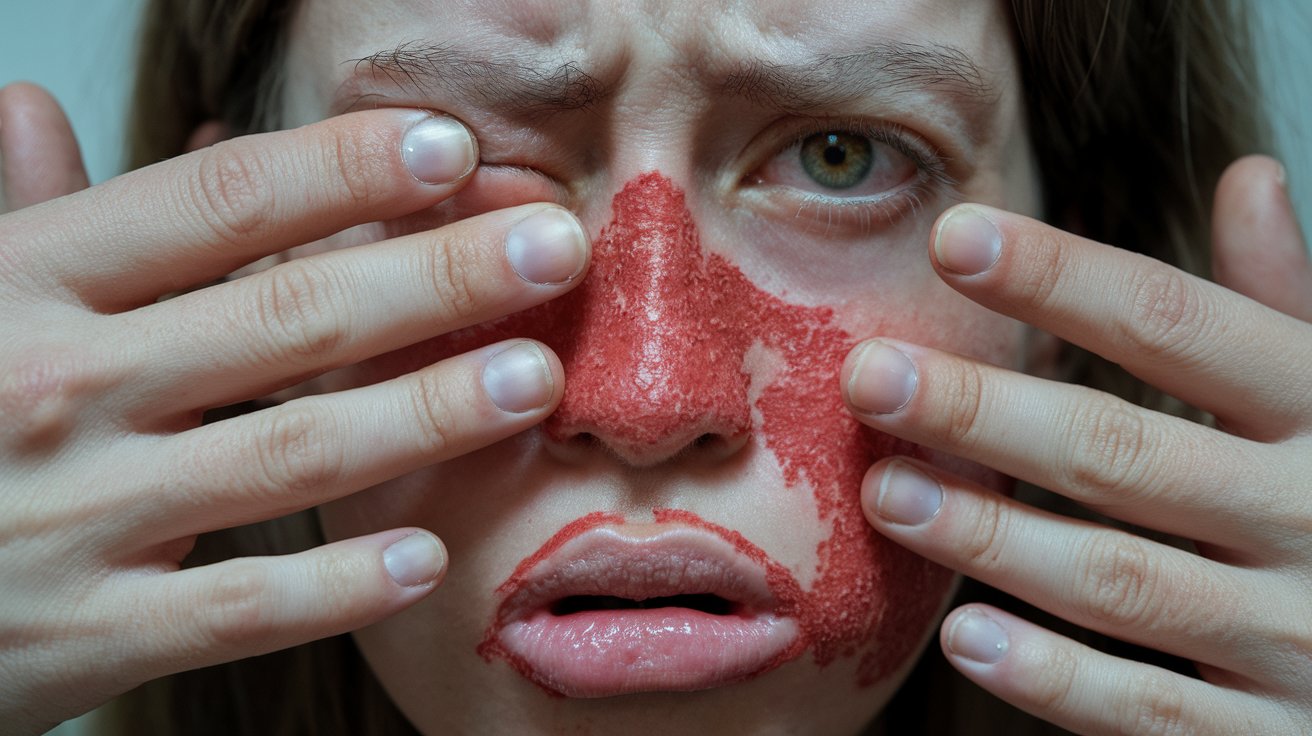
What is Oculomucocutaneous Syndrome? This rare condition affects the eyes, skin, and mucous membranes. Oculomucocutaneous Syndrome can cause symptoms like dry eyes, skin rashes, and mouth sores. It often results from an immune system malfunction, where the body mistakenly attacks its own tissues. Autoimmune diseases like lupus or Sjogren's syndrome can trigger this syndrome. Understanding the symptoms and causes is crucial for managing the condition effectively. Treatments usually focus on relieving symptoms and improving quality of life. Early diagnosis can make a significant difference in managing the syndrome. Stay informed to better navigate this complex condition.
Key Takeaways:
- Oculomucocutaneous Syndrome is a rare genetic disorder affecting the eyes, skin, and mucous membranes, leading to severe eye problems, skin abnormalities, and chronic mouth and throat infections.
- While there is no cure for Oculomucocutaneous Syndrome, treatments like eye drops, sunscreen, and antibiotics can help manage symptoms, and ongoing research offers hope for future advancements.
What is Oculomucocutaneous Syndrome?
Oculomucocutaneous Syndrome is a rare genetic disorder affecting the eyes, skin, and mucous membranes. This condition can lead to various symptoms and complications. Here are some intriguing facts about this syndrome.
-
Genetic Origin: Oculomucocutaneous Syndrome is inherited in an autosomal recessive pattern, meaning both parents must carry the gene for a child to be affected.
-
Eye Complications: Individuals with this syndrome often experience severe eye problems, including chronic inflammation, which can lead to vision loss.
-
Skin Issues: The syndrome can cause skin abnormalities such as dryness, scaling, and increased sensitivity to sunlight.
-
Mucous Membranes: Affected individuals may have issues with their mucous membranes, leading to chronic mouth and throat infections.
-
Diagnosis: Diagnosing this syndrome typically involves genetic testing and a thorough examination of symptoms.
Symptoms and Signs
Recognizing the symptoms early can help manage the condition better. Here are some common signs to look out for.
-
Photophobia: Sensitivity to light is a prevalent symptom, making it difficult for individuals to be in bright environments.
-
Conjunctivitis: Chronic eye inflammation, or conjunctivitis, is a frequent issue for those with this syndrome.
-
Dry Eyes: Many individuals suffer from dry eyes, requiring constant lubrication with eye drops.
-
Skin Lesions: Skin lesions and rashes are common, often exacerbated by sun exposure.
-
Mouth Ulcers: Persistent mouth ulcers can make eating and speaking painful.
Treatment Options
While there is no cure, various treatments can help manage the symptoms. Here are some of the common approaches.
-
Eye Drops: Regular use of lubricating eye drops can alleviate dry eyes and reduce discomfort.
-
Sunscreen: Applying sunscreen can protect sensitive skin from harmful UV rays.
-
Antibiotics: Antibiotics may be prescribed to treat chronic infections in the mucous membranes.
-
Steroid Creams: Steroid creams can help reduce skin inflammation and lesions.
-
Pain Relief: Over-the-counter pain relievers can help manage discomfort from mouth ulcers and skin issues.
Living with Oculomucocutaneous Syndrome
Managing daily life with this syndrome requires some adjustments. Here are some tips for those affected.
-
Protective Eyewear: Wearing sunglasses can help reduce light sensitivity and protect the eyes.
-
Hydration: Staying hydrated is crucial for maintaining healthy mucous membranes and skin.
-
Regular Check-ups: Frequent visits to healthcare providers can help monitor and manage symptoms effectively.
-
Healthy Diet: A balanced diet can support overall health and potentially reduce the severity of symptoms.
-
Support Groups: Joining support groups can provide emotional support and practical advice from others facing similar challenges.
Research and Future Directions
Ongoing research aims to better understand and treat Oculomucocutaneous Syndrome. Here are some exciting developments.
-
Gene Therapy: Scientists are exploring gene therapy as a potential treatment to correct the genetic defect causing the syndrome.
-
New Medications: Research is underway to develop new medications that can more effectively manage symptoms.
-
Clinical Trials: Clinical trials are being conducted to test the safety and efficacy of emerging treatments.
-
Patient Registries: Establishing patient registries helps researchers collect data and identify patterns in the syndrome's presentation and progression.
-
Awareness Campaigns: Increasing awareness about the syndrome can lead to earlier diagnosis and better support for affected individuals.
Historical Context
Understanding the history of Oculomucocutaneous Syndrome can provide insight into how far we've come in managing this condition.
-
First Descriptions: The syndrome was first described in medical literature in the early 20th century.
-
Genetic Discovery: The genetic basis of the syndrome was identified in the late 20th century, paving the way for more accurate diagnoses.
-
Advancements in Treatment: Over the years, advancements in medical science have improved the quality of life for those with the syndrome.
-
Patient Advocacy: Patient advocacy groups have played a crucial role in raising awareness and funding research.
-
Medical Publications: Numerous medical publications have documented case studies and research findings, contributing to a better understanding of the syndrome.
Impact on Daily Life
Living with Oculomucocutaneous Syndrome can be challenging, but many find ways to adapt. Here are some aspects of daily life affected by the syndrome.
-
School and Work: Light sensitivity and frequent medical appointments can impact attendance and performance in school and work.
-
Social Interactions: Chronic symptoms may affect social interactions, leading to feelings of isolation.
-
Mental Health: The stress of managing a chronic condition can take a toll on mental health, making support systems essential.
-
Physical Activity: Skin and eye issues may limit outdoor activities, requiring creative solutions to stay active.
-
Travel: Traveling can be challenging due to the need for medical supplies and accommodations for light sensitivity.
Final Thoughts on Oculomucocutaneous Syndrome
Oculomucocutaneous syndrome, a rare genetic disorder, affects the eyes, skin, and mucous membranes. Understanding its symptoms and treatment options is crucial for managing the condition. Early diagnosis can significantly improve the quality of life for those affected. Genetic counseling helps families understand the risks and make informed decisions.
Research continues to advance, offering hope for better treatments and possibly a cure. Staying informed and connected with support groups can provide valuable resources and emotional support.
Remember, knowledge empowers. By spreading awareness, we can foster a more inclusive and supportive environment for individuals with oculomucocutaneous syndrome. Keep learning, stay curious, and support those in need.
Frequently Asked Questions
Was this page helpful?
Our commitment to delivering trustworthy and engaging content is at the heart of what we do. Each fact on our site is contributed by real users like you, bringing a wealth of diverse insights and information. To ensure the highest standards of accuracy and reliability, our dedicated editors meticulously review each submission. This process guarantees that the facts we share are not only fascinating but also credible. Trust in our commitment to quality and authenticity as you explore and learn with us.


